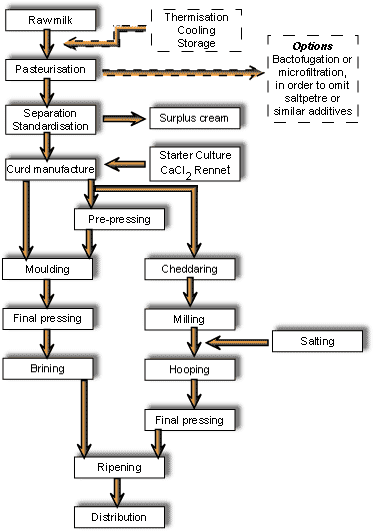Tuesday, July 19, 2011
Cheddaring It Out
Yesterday's third session of Cheese Boot Camp: Summer 2011 was an awesome affair. We cheddared it out with eight different cheddar cheeses paired with two beers and six wines. Farmstead cheddaring took center stage--an art that was resurrected in the 60's by the hippies. Disillusioned by national politics and the controversial Vietnam War, humble people seeking land and rural farm life left their occupations to craft cheese. After the Industrial Revolution and both World Wars, cheddar had lost its identity and had become the homogenized American orange, creamy, pasteurized cheese block found in every supermarket.
Cheddar originated in Somerset, England in the caves of Cheddar Gorge, but the process crossed the Atlantic Ocean and settled in the Mid West and went on to Australia and South America. The name Cheddar was never protected by the Brits, so it became widely used by many cultures. Unfortunately, very few cheddars were true to the original style made famous in the West Country of England in the departments of Cornwall, Devon, and Somerset. Due to the rising population, food demands drastically increased and companies were encouraged to produce large quantities of fast-ripening cheese. Small producers were quickly forgotten and hard to access during the Industrial Era in the late 1800s and early 1900s. Before World War II, Britain boasted 15,000 cheesemakers. In 1959, only 130 cheesemakers could befound in the British nation.
Everything comes full-circle though, and cheese makers are crafting more phenomenal cheddars by the day. A range of flavors can be experienced when you have the opportunity to nibble a small cheddar wedge crafted from purists. Mostly flavors of toffee, nuts, caramel, grass, burnt sugar, butter, spice, salt, and pungent sensations pop in mind when tasting cheddar cheese. The beauty of cheddar is the bold, rich flavor you inevitably experience. Sure, I like stinky, washed-rind cheeses or an occasional soft-ripened Brie with its earthy, shroomy undertones; but a cheddar cheese is generally a sure bet for hedonistic pleasure. Most importantly, they pair so well with beer and bold, robust red wines. White wines can work if you look to full-bodied grape varieties such as Chardonnay, Semillon, Roussanne/Marsanne, Viognier, and Chenin Blanc; but reds work better, in my opinion.
Below, I have listed the pairings and cheeses sampled at our Cheddar Whiz session. The class conveyed that cheddar is not a specific cheese, but rather a process that some cheeses are fated to undergo. Cheddaring is a method of stacking small, compact curds to create pressure; thereby, eliminating moisture and dehydrating the aging cheese. End results produce hard cheeses with sharp, mouth watering flavors.
Cheese Pairings:
mildest in flavors:
Double Gloucester Singleton, UK
Saxon Brown Semillon Mendocino, California
fruit and spice:
Beehive Cheese Co. Big John's Cajun Rub Promontory, Salt Lake City, Utah
Green Flash Brewery Trippel Belgium-style, San Diego, California
chocolate on chocolate:
Rogue Creamery Chocolate Stout Cheddar Oregon
Rogue Brewery Chocolate Stout Oregon
fruity, tangy, mild:
Fiscalini Cheddar Rodesto, California
Worthy Sophia's Cuvee Napa Valley, California
goaty, earthy, medium:
Snow White Goat's Cheddar Carr Valley, Wisconsin
Elizabeth Spencer Chenin Blanc Mendocino County, California
horseradish, herbaceous, pasteurization of cheese:
Quicke's Cheddar Devon, UK
Familia Mayol Quatro Primos Mendoza, Argentina (Syrah, Malbec, Bonarda, Cabernet Sauvignon)
sharp, buttery, nutty, caramel, Vermont style (meaning no coloring):
Quebec 7 year aged Canada
Tierra Rioja Crianza, Spain
sharp, firm, pungent, grainy, rich:
Cabot Clothbound Reserve Cheddar Vermont
Goose Ridge G3 Syrah, Merlot, Cabernet Sauvignon, Columbia Valley, Washington
Subscribe to:
Post Comments (Atom)




No comments:
Post a Comment